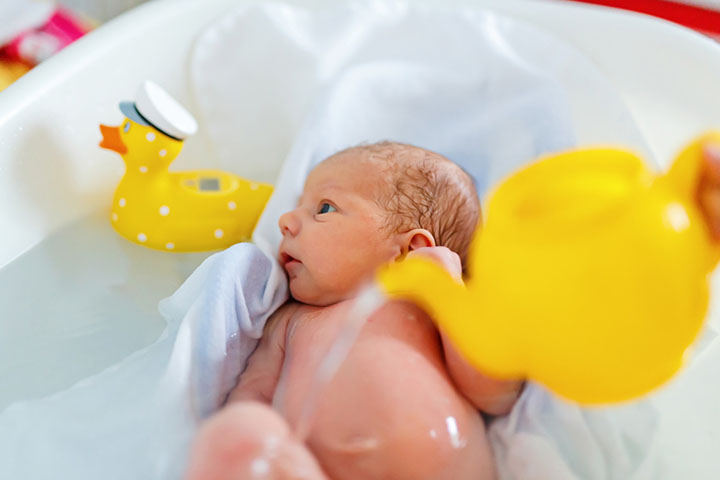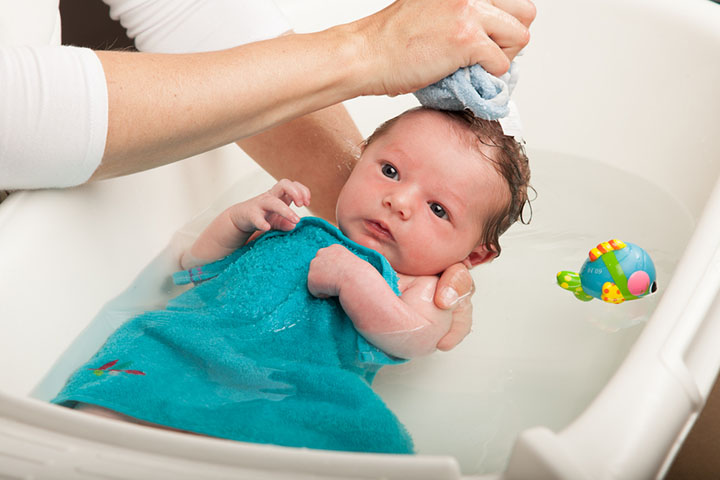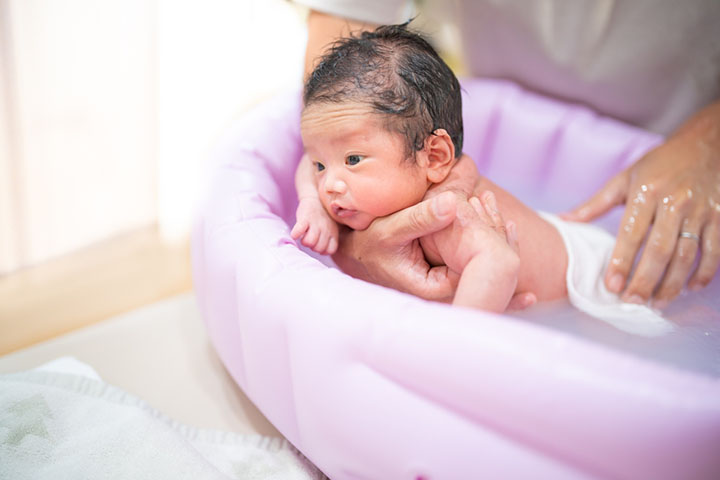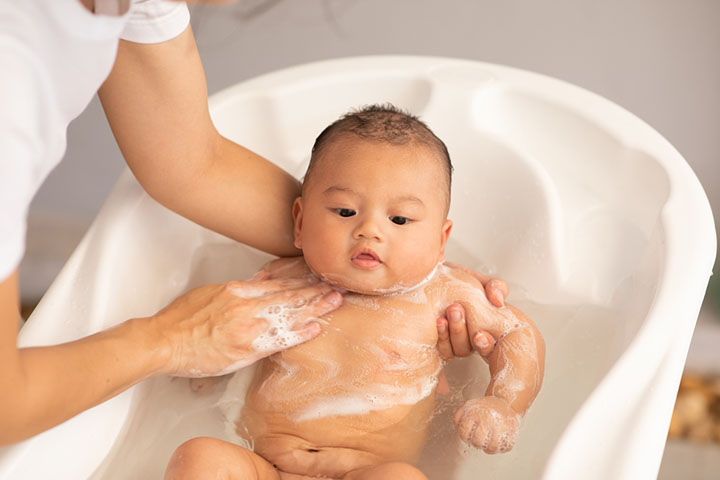
Image: Shutterstock
As parents, we want to provide the best care for our newborns right from the start. However, the timing of a baby’s first bath has become a topic of discussion. In this article, we’ll explore the reasons behind delaying the first bath and offer insights to help you make an informed decision. Let’s dive in and discover why taking a pause before that initial bath may be beneficial.
Preserving The Vernix
Image: Shutterstock
The vernix caseosa, often referred to as vernix, is a waxy substance that covers a baby’s skin at birth. While it may not be the most visually appealing sight, the vernix serves a vital purpose. It acts as a natural moisturizer and protective barrier, keeping your baby’s delicate skin hydrated and shielding it from environmental factors (1). Delaying the first bath allows the vernix to be absorbed, providing nourishment and helps to maintain your baby’s skin health.
Regulating Body Temperature
Image: Shutterstock
Babies are born with an incredible ability to regulate their body temperature, but it takes some time for their tiny bodies to fully adapt to the outside environment. The temperature difference between the amniotic fluid and the delivery room can be quite significant. By delaying the first bath, you allow your baby’s body temperature to stabilize naturally (2). The vernix, mentioned earlier, also helps insulate their skin, providing an additional layer of protection and warmth.
Promoting Bonding And Breastfeeding
Image: Shutterstock
The first hours after birth are a precious time for bonding between parents and their newborns. Delaying the bath allows uninterrupted skin-to-skin contact, which promotes bonding and encourages the release of oxytocin, the “love hormone.” This emotional connection enhances the breastfeeding experience and supports the establishment of a successful breastfeeding relationship.
Supporting Healthy Gut Development
Image: Shutterstock
Recent studies have shed light on the importance of a baby’s gut microbiome in establishing a robust immune system and overall health. The beneficial bacteria present on a mother’s skin can be transferred to the baby during skin-to-skin contact (3). Delaying the bath preserves this transfer and contributes to the development of a healthy gut microbiome, which can have long-term health benefits for your little one.
Reducing Stress
Image: Shutterstock
The birthing process can be quite intense for both mother and baby. Immediately after birth, babies benefit from a calm and soothing environment that minimizes stress. Giving your baby some time before their first bath allows them to adjust to their new surroundings, recover from the birthing experience, and experience a sense of security in the arms of their parents.
Respecting Cultural Practices
Image: Shutterstock
In many cultures around the world, there are traditional practices and beliefs surrounding the care of newborns. Delaying the first bath aligns with the cultural norms and traditions of certain communities. It allows families to observe specific rituals or customs associated with the postnatal period, honoring their cultural heritage and promoting a sense of identity and belonging.
Promoting Skin’s Natural pH Balance
Image: Shutterstock
Newborns have delicate and sensitive skin that is still adapting to the outside world. The pH balance of their skin is an important factor in maintaining its health and preventing various skin issues. Delaying the first bath allows the natural pH balance of the baby’s skin to stabilize and adjust gradually, reducing the risk of dryness, irritation, or disruption of the skin’s protective barrier.
Minimizing Exposure To Chemicals
Image: Shutterstock
In addition to minimizing exposure to potentially harmful elements, delaying the first bath also allows your baby’s skin to retain its natural moisture and protective barriers. This can help prevent dryness and irritation, promoting healthier skin in the early stages of their life. By taking this gentle and cautious approach, you can prioritize your baby’s well-being and provide them with a more comfortable and nurturing bathing experience.
Building Trust In The Caregiver
Image: Shutterstock
Delaying the first bath fosters a bond of trust between the baby and their caregivers. Respecting the baby’s needs and allowing them to adjust at their own pace creates a sense of security and trust. This foundation of trust can positively impact the child’s overall well-being and contribute to their ability to form healthy relationships later in life.
Each Baby Is Unique
Image: Shutterstock
Trust your instincts and work with your healthcare provider to make informed decisions about delaying your baby’s first bath. Focus on creating a nurturing environment, bonding with your baby, and making choices that align with your values and support their well-being. Enjoy the incredible journey of parenthood with confidence and love.
While the instinct to give your newborn a bath right after birth is understandable, considering the potential benefits of delaying the first bath is essential. By allowing the vernix to nourish and protect your baby’s skin, supporting temperature regulation, promoting bonding and breastfeeding, facilitating healthy gut development, reducing stress, and following recommended practices, you can provide the best start for your little one’s life journey. Remember, each baby is unique, so it’s always a good idea to discuss your preferences and concerns with your healthcare provider to make an informed decision that aligns with your baby’s needs and your own parenting goals. Let us know in the comments your experience of bathing your newborn baby!






















